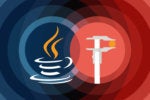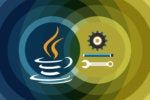
What is the JDK? Introduction to the Java Development Kit
The JDK is the development platform for building Java applications. Learn about different JDK versions, then install a JDK in your development environment and use it to compile a Java program.

What is the JRE? Introduction to the Java Runtime Environment
The JRE creates the JVM and ensures dependencies are available to your Java programs. It plays a vital role in devops and cloud configurations.

What is the JVM? Introducing the Java virtual machine
The Java virtual machine manages application memory and provides a portable execution environment for Java-based applications. Developers reap the rewards in performance, stability, and predictable runtimes.

What is JSP? Introduction to Jakarta Server Pages
One of the original Java web technologies, JSP is still widely used with servlets and JSTL. Here's how to use Jakarta Server Pages to build dynamic web pages that connect to the Java back end.

What is Tomcat? The original Java servlet container
Everything you need to know about Tomcat: The high-availability Java and Jakarta EE application server for servlets, JSP, and WebSockets.

What is JPA? Introduction to Java persistence
Get to know the Java persistence standard based on Hibernate and learn how to use JPA to store and manage Java objects in a relational or NoSQL database.

What is JDBC? Introduction to Java Database Connectivity
Get an overview of JDBC's architecture, then learn how to connect to a database and handle SQL queries and responses with PreparedStatements, transactions, connection pooling, and more.

What is OSGi? A different approach to Java modularity
The OSGi approach to developing and deploying modular software in Java offers an interesting alternative to standard runtimes and frameworks, especially for mobile and IoT applications

What is JPMS? Introducing the Java Platform Module System
The module system introduced in Java 9 makes it easier to organize your code. Here’s a brief guide to working with modules in Java

What is service-oriented architecture?
Get an overview of service-oriented architecture implemented using SOAP-based web services

What is Apache Maven? Build and dependency management for Java
Maven provides consistent project structures, declarative configuration, and a wide range of plugins, along with a centralized repository for storing and downloading third-party software.

What is Spring Framework? Component-based development for Java
Tutorial introduction to inversion of control and dependency injection, with Spring Web examples.

What is EJB? The evolution of Enterprise JavaBeans
Java's server-side platform for developing distributed business applications.

What is JSF? Introducing JavaServer Faces
JavaServer Faces is the Java standard technology for building component-based web interfaces. Get started with JSF, including what's new in JSF 2.3

What are Java servlets? Request handling for Java web applications
The Java Servlet API is part of the Java EE stack, providing URL mapping and request handling capabilities for Java web applications






